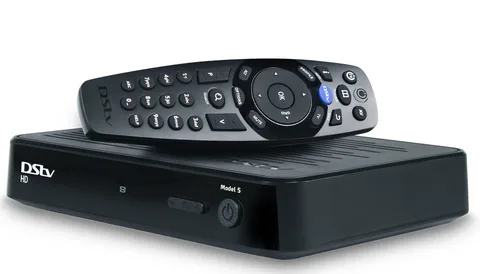Introduction: The Evolution of Television
Television has undergone a remarkable transformation since its inception. From grainy black and white broadcasts received through bulky antennas to the vibrant, high-definition streams we enjoy today, the way we consume visual entertainment has been continuously evolving. One of the most significant advancements in this journey is the advent of Internet Protocol Television, or IPTV. This innovative technology has revolutionized how television content is delivered and consumed, offering viewers unprecedented flexibility, choice, and interactivity.
What Exactly is IPTV?
At its core, IPTV is a system that delivers television content over the internet protocol (IP) networks, which are the same networks used for accessing the internet. Unlike traditional broadcasting methods like terrestrial, satellite, and cable, which transmit signals through dedicated physical infrastructure, IPTV leverages the existing internet infrastructure to deliver television programs and video on demand (VOD) content directly to users’ devices.
Think of it this way: traditional television broadcasts are like a radio tower sending out a signal that anyone with an antenna can pick up. Cable television is like a dedicated pipeline delivering a set package of channels to your home. In contrast, IPTV is more akin to browsing the internet. You request specific content, and it is streamed to your device on demand. This fundamental difference in delivery mechanism unlocks a wealth of possibilities and advantages for both content providers and viewers.
How Does IPTV Work? The Technical Underpinnings
The process of delivering television content via IPTV involves several key stages:
- Content Acquisition and Encoding: Television programs, movies, and other video content are first acquired by the IPTV service provider. This content is then encoded into a digital format suitable for transmission over IP networks. Common encoding formats include H.264 and HEVC (H.265), which efficiently compress video data without significant loss of quality.
- Content Storage and Management: The encoded content is stored on servers managed by the IPTV provider. These servers are optimized for streaming and allow for efficient retrieval and delivery of content to users. Sophisticated content management systems are employed to organize and categorize the vast library of available programs and VOD titles.
- Network Transmission: When a user requests a specific channel or VOD title, the request is routed through the IP network to the IPTV provider’s servers. The requested content is then streamed to the user’s device using IP protocols. This streaming involves breaking down the digital content into small packets of data that are transmitted sequentially over the internet.
- User Reception and Decoding: On the user’s end, a compatible device, such as a smart TV with IPTV capabilities, a set-top box connected to a regular TV, a computer, a tablet, or a smartphone, receives the data packets. These packets are then reassembled and decoded by the device’s software or hardware, converting the digital data back into viewable video and audio.
Key Components of an IPTV System:
- Content Providers: These are the entities that create or own the television programs and other video content.
- IPTV Service Providers: These companies manage the infrastructure for acquiring, encoding, storing, and distributing content over IP networks to subscribers.
- Content Delivery Network (CDN): CDNs are geographically distributed networks of servers that help to efficiently deliver content to users, ensuring smooth streaming and reducing latency.
- Network Infrastructure: This includes the broadband internet connections that users have in their homes and the wider internet infrastructure that facilitates data transmission.
- User Devices: These are the devices that users employ to access and view IPTV content, such as smart TVs, set-top boxes, computers, tablets, and smartphones.
- Middleware: This software layer manages various aspects of the IPTV service, including user authentication, service provisioning, electronic program guides (EPGs), and VOD catalog management.
Advantages of IPTV Over Traditional Television:
IPTV offers a multitude of advantages that have contributed to its growing popularity:
- On-Demand Content and Time-Shifting: Unlike traditional broadcasting with fixed schedules, IPTV allows viewers to watch what they want, when they want. VOD services provide access to a vast library of movies and TV shows that can be streamed at the user’s convenience. Features like catch-up TV and network PVR (Personal Video Recorder) enable viewers to watch previously aired programs at their leisure, effectively eliminating the constraints of broadcast schedules.
- Interactive Features: IPTV platforms can offer interactive features that are not possible with traditional television. These can include interactive program guides with advanced search and filtering options, personalized recommendations based on viewing history, interactive advertising, and even the integration of social media and other online services.
- Personalization and Customization: IPTV services can be tailored to individual user preferences. Providers can offer customized channel packages, personalized content recommendations, and user profiles that track viewing habits to suggest relevant content.
- Cost-Effectiveness: In many cases, IPTV subscriptions can be more cost-effective than traditional cable or satellite packages, especially for users who are interested in a specific selection of channels or primarily consume on-demand content. The ability to choose specific channel packages allows users to avoid paying for channels they don’t watch.
- High-Quality Video and Audio: IPTV can deliver high-definition (HD) and even ultra-high-definition (UHD or 4K) video quality, along with high-fidelity audio, provided the user has a sufficient internet bandwidth. This results in a superior viewing experience compared to older analog broadcasting methods.
- Integration with Other Services: IPTV can be easily integrated with other internet-based services, such as online gaming, video conferencing, and web browsing, often through a single device like a smart TV or set-top box.
- Portability and Multi-Screen Viewing: Many IPTV services allow users to access their subscriptions on multiple devices, such as smartphones and tablets, enabling them to watch their favorite content on the go.
Potential Challenges and Considerations:
While IPTV offers numerous benefits, there are also some challenges and considerations to be aware of:
- Internet Bandwidth Requirements: High-quality IPTV streaming requires a stable and sufficiently fast internet connection. Insufficient bandwidth can lead to buffering, interruptions, and a degraded viewing experience.
- Service Reliability: The reliability of IPTV services is dependent on the stability of the user’s internet connection and the infrastructure of the IPTV provider. Outages or network congestion can disrupt service.
- Content Availability and Licensing: The availability of specific channels and content can vary depending on the IPTV provider and licensing agreements. Geographical restrictions may also apply.
- Security and Piracy Concerns: Like any digital content delivery system, IPTV is susceptible to piracy. Unauthorized access and distribution of content can be a concern for content owners and service providers.
- The Need for Compatible Devices: Users need compatible devices, such as smart TVs or set-top boxes, to access IPTV services on their televisions. Older analog TVs may require additional hardware.
The Growing Popularity of IPTV:
The global IPTV market has experienced significant growth in recent years, and this trend is expected to continue. Several factors are driving this growth:
- Increasing Broadband Penetration: As high-speed internet access becomes more widespread and affordable, more households have the necessary infrastructure to support IPTV services.
- Cord-Cutting Trend: A growing number of consumers are opting to “cut the cord” by canceling their traditional cable or satellite subscriptions in favor of more flexible and often cheaper streaming options, including IPTV.
- Demand for On-Demand Content: The desire for greater control over what and when they watch is a major driver for the adoption of IPTV and VOD services.
- Technological Advancements: Improvements in video compression technologies, network infrastructure, and streaming protocols have enhanced the quality and reliability of IPTV services.
- Competitive Pricing and Bundling: Many IPTV providers offer competitive pricing and bundle their services with internet and phone packages, making them an attractive option for consumers.
The Future of IPTV:
The future of IPTV looks promising, with ongoing advancements and evolving trends shaping its trajectory:
- Further Integration with OTT Services: The lines between traditional IPTV and Over-The-Top (OTT) streaming services like Netflix and Amazon Prime Video are becoming increasingly blurred. Hybrid platforms that integrate both linear channels and on-demand content are likely to become more common.
- Enhanced Interactivity and Personalization: We can expect to see even more sophisticated interactive features, personalized recommendations driven by artificial intelligence (AI), and deeper integration with social media and other online platforms.
- Improved Video Quality and Formats: The adoption of higher resolutions like 8K and advanced video formats like HDR (High Dynamic Range) will continue to enhance the viewing experience on IPTV platforms.
- The Rise of AI and Machine Learning: AI and machine learning will play a crucial role in content discovery, personalized recommendations, and optimizing network performance for IPTV delivery.
- IPTV and the Internet of Things (IoT): Integration with the IoT could lead to new and innovative features, such as controlling TV viewing through voice commands or integrating it with smart home systems.
Conclusion: IPTV – Reshaping the Television Landscape
IPTV represents a fundamental shift in how television content is delivered and consumed. By leveraging the power and flexibility of the internet protocol, it offers viewers a wealth of advantages over traditional broadcasting methods, including on-demand access, interactive features, personalization, and often, cost savings. While challenges such as internet bandwidth requirements and content licensing exist, the continued growth and evolution of IPTV demonstrate its significant impact on the television landscape. As technology advances and consumer preferences continue to evolve, IPTV is poised to play an even more prominent role in the future of how we watch and experience television. For those looking to explore the world of IPTV, services like IPTV offer a gateway to this exciting technology. Understanding the intricacies of IPTV empowers consumers to make informed choices about their entertainment options in an increasingly digital world. The convenience and flexibility offered by IPTV have made it a compelling alternative for many, and as the technology matures, its influence on our viewing habits will only continue to grow. Exploring options from providers such as IPTV can open up a new realm of television viewing possibilities.







